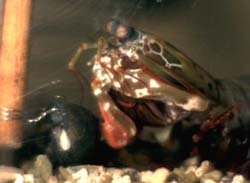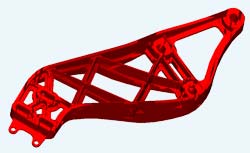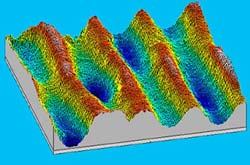Grasses typify the Great Plains, so it’s not surprising that more than 108 species of grasshoppers are at home on the range in the central United States.
However, a grasshopper that doesn’t love grass lives in Kansas too, a recent discovery at Kansas State University’s Konza Prairie Biological Station shows. This newfound hopper prefers trees.
The first specimen was actually collected in September 2001 by a student from Fort Riley Middle School, according to Valerie

The Arecibo Observatory telescope, the largest and most sensitive single dish radio telescope in the world, is about to get a good deal more sensitive
Today (Wednesday, April 21) the telescope got a new “eye on the sky” that will turn the huge dish, operated by Cornell University for the National Science Foundation, into the equivalent of a seven-pixel radio camera.
The complex new addition to the Arecibo telescope was hauled 150 meters (492 feet) above the telescope’s

Saddle-shaped structure provides the spring to generate powerful punch
Forget boxers Oscar de la Hoya and Shane Mosley. The fastest punches are delivered by a lowly crustacean – the stomatopod, or mantis shrimp.
With the help of a BBC camera crew and the loan of a high-speed video camera, University of California, Berkeley, scientists have recorded the swiftest kick, and perhaps most brutal attack, of any predator. The shrimp flail their club-shaped front leg at peak speeds

Researchers at Purdue University have developed the first system capable of searching a company’s huge database of three-dimensional parts created with computer-aided design software.
Such “parts search engines” could save time and millions of dollars annually by making it easier for companies to “reuse” previous designs, benefiting from the lessons learned in creating past parts.
“Designers spend about 60 percent of their time searching for the right information, which is rated as
Close look at structure of transport proteins could aid search Red-blooded genealogists take note: The discovery in microbes of two oxygen-packing proteins, the earliest known ancestors to hemoglobin, brings scientists closer to identifying the earliest life forms to use oxygen. According to the project’s lead investigator, University of Hawaii microbiologist Maqsudul Alam, the research may also aid in the search for blood substitutes as new

Berkeley Lab physicists develop way to digitally restore and preserve
audio recordings
The 1995 discovery of the top quark and singer Marian Anderson’s 1947 rendition of Nobody Knows the Trouble I’ve Seen may seem unrelated. But through an interagency agreement with the Library of Congress, the same technology used to study subatomic particles is helping to restore and preserve the sounds of yesteryear.
“We developed a way to image the grooves in a recording that is simil